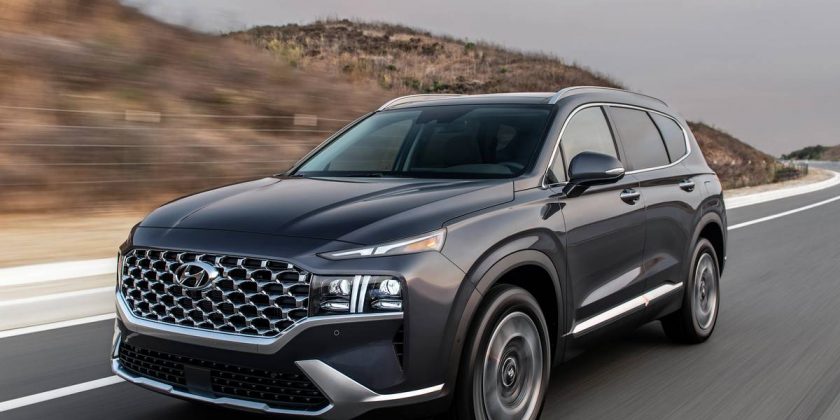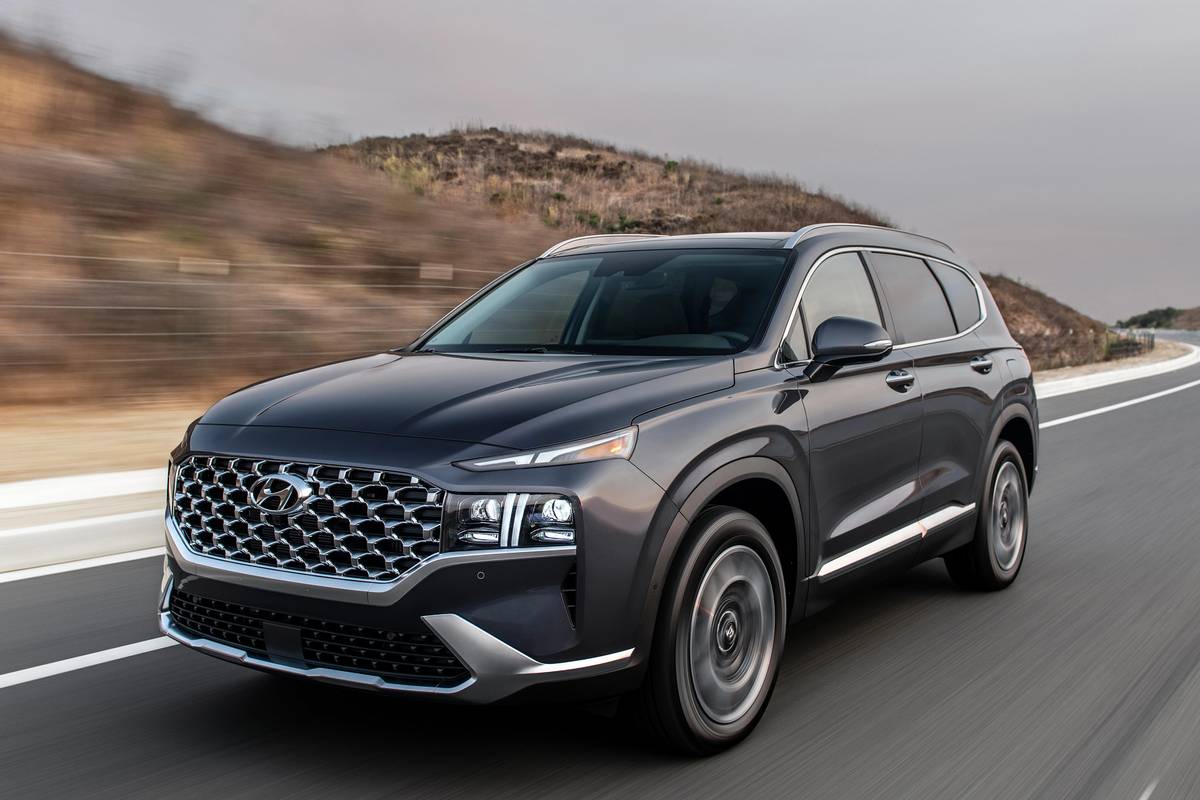The verdict: Hyundai heavily revised its five-occupant Santa Fe for 2021 with updated styling, new engines and revised tech. We tested the top trim level, called the Calligraphy, and found it very roomy, but we had a little trouble accessing the lower anchors with two of our car seats.
Does it fit three car seats? No.
Take a look at how the Latch system and each car seat scored below in our Car Seat Check of the 2021 Hyundai Santa Fe.
Related: Search Car Seat Checks
A Grade
- Infant: Installation using the infant seat’s chunky Latch connectors was easy and our 5-foot-6-inch-tall front passenger had ample legroom with the seat installed behind them.
B Grade
- Latch: The two sets of lower anchors sit just within the seat bight. They’re easy to use with our infant seat’s chunky Latch connectors, but connecting to them requires a bit of muscle with our convertible seat’s skinny connectors. Three top tether anchors are clearly marked on the seatback.
- Forward-facing convertible: After raising the head restraint, the convertible fit well. Connecting to the top tether anchor was easy, but it took a little more effort to connect to the lower Latch anchor using the convertible’s skinny connectors.
- Rear-facing convertible: Again, we had to work a little to connect to the Latch anchors, but there was plenty of room for the car seat.
- Booster: After raising the head restraint, the booster fit well. The Santa Fe’s floppy buckles could be tough for kids to grasp and use independently, however. Also, the middle spot’s shoulder strap comes down into the outboard seating area, so a booster would need to be installed on top of it. This could be a problem if someone is sitting in the middle spot.
C Grade
- None
Grading Scale
A: Plenty of room for the car seat and the child; doesn’t impact driver or front passenger legroom. Easy to find and connect to Latch and tether anchors. No fit issues involving head restraint or seat contouring. Easy access to the third row.
B: One room, fit or connection issue. Some problems accessing the third row when available.
C: Marginal room plus one fit or connection issue. Difficult to access the third row when available.
D: Insufficient room, plus multiple fit or connection issues.
F: Does not fit or is unsafe.
About Cars.com’s Car Seat Checks
Editors Jennifer Geiger and Jennifer Newman are certified child safety seat installation technicians.
For the Car Seat Check, we use a Chicco KeyFit 30 infant-safety seat, a Graco Contender 65 convertible seat and Graco TurboBooster seat. The front seats are adjusted for a 6-foot driver and a shorter passenger. The three child seats are installed in the second row. The booster seat sits behind the driver’s seat, and the infant and convertible seats are installed behind the front passenger seat.
We also install the forward-facing convertible in the second row’s middle seat with the booster and infant seat in the outboard seats to see if three car seats will fit; a child sitting in the booster seat must be able to reach the seat belt buckle. If there’s a third row, we install the booster seat and a forward-facing convertible. Learn more about how we conduct our Car Seat Checks.
Parents should also remember that they can use the Latch system or a seat belt to install a car seat, and that Latch anchors have a weight limit of 65 pounds, including the weight of the child and the weight of the seat itself.
Related Video: 2021 Hyundai Elantra First Impressions
Cars.com’s Editorial department is your source for automotive news and reviews. In line with Cars.com’s long-standing ethics policy, editors and reviewers don’t accept gifts or free trips from automakers. The Editorial department is independent of Cars.com’s advertising, sales and sponsored content departments.
Source: Read Full Article



